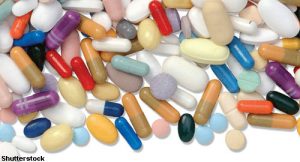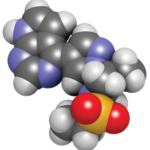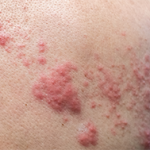 ACR CONVERGENCE 2022—Biologic disease-modifying anti-rheumatic drugs (bDMARDs) and targeted synthetic DMARDs (tsDMARDs) are widely used to treat patients with rheumatoid arthritis (RA). Despite their efficacy in controlling rheumatic disease activity, these treatments may increase the risk of infections.1 Tumor necrosis factor (TNF) inhibitors and Janus kinase (JAK) inhibitors carry a Boxed Warning in the package labeling regarding the risk of serious infection.2–9
ACR CONVERGENCE 2022—Biologic disease-modifying anti-rheumatic drugs (bDMARDs) and targeted synthetic DMARDs (tsDMARDs) are widely used to treat patients with rheumatoid arthritis (RA). Despite their efficacy in controlling rheumatic disease activity, these treatments may increase the risk of infections.1 Tumor necrosis factor (TNF) inhibitors and Janus kinase (JAK) inhibitors carry a Boxed Warning in the package labeling regarding the risk of serious infection.2–9
During ACR Convergence 2022, Se Rim Choi, MD, and PhD student in the Division of Rheumatology, Department of Internal Medicine, Seoul National University Hospital and Seoul National University College of Medicine, South Korea, presented data on the comparative risk of infection between JAK inhibitors and TNF inhibitors in patients with RA.10
Methods: This cohort study used the Korea National Health Insurance Service database of patients with RA, examining patients who initiated treatment with a JAK inhibitor or TNF inhibitor between 2009 and 2019. Patients were evaluated for infection, including serious bacterial infections, opportunistic infections and herpes zoster.
Propensity-score fine-stratification (PSS) based weighting was used to adjust for more than 60 baseline covariates (not defined). PSS is used to weight groups, making them more similar. Researchers estimated hazard ratios (HRs) and 95% confidence intervals (CIs) using Cox proportional hazard models.
The Results
Of the 2,967 patients who initiated JAK inhibitors and 13,152 patients who initiated TNF inhibitors, the study evaluated 2,963 patients who initiated JAK inhibitors and 5,169 patients who initiated TNF inhibitors. The mean follow-up was 1.16 years, with the most frequent infection being herpes zoster. The incidence rate per 100 person-years for herpes zoster was 11.54 for JAK inhibitor-treated patients and 4.88 for TNF inhibitor-treated patients.
Serious bacterial infections had an incidence rate of 1.39 per 100 person-years for JAK inhibitor-treated patients and 1.32 for TNF inhibitor-treated patients. Opportunistic infections were rare, with an incidence rate of 0.11 for JAK inhibitor-treated patients and 0.49 for TNF inhibitor-treated patients. The majority of opportunistic infections were tuberculosis, with an incidence rate of 0.12 for JAK inhibitor-treated patients and 0.49 for TNF inhibitor-treated patients.
The PSS-weighted HR [95% Cl] for individual infection types comparing patients taking JAK inhibitors with those taking TNF inhibitors was: 1) herpes zoster: 2.37 [95% Cl, 2.00–2.80]; 2) serious bacterial infections: 1.04 [95% CI, 0.71–1.52]; and 3) opportunistic infections: 0.25 [0.09–0.73]. The risk of being hospitalized with a herpes zoster infection was much greater for patients taking JAK inhibitors than for those taking TNF inhibitors, with an HR of 7.43 [3.91–14.11].
In Summary
This study found that patients with RA who initiated treatment with JAK inhibitors had a very high incidence of herpes zoster, with almost double the risk of patients who initiated treatment with TNF inhibitors. The risk of serious bacterial infections was comparable between the groups; however, the risk of developing an opportunistic infection—tuberculosis in particular—was lower for JAK inhibitor-treated patients than TNF inhibitor-treated patients.
This study did not examine all drug classes and was not randomized, which limits the strength of any recommendations that can be made on these findings. However, it’s important to understand which agents have a higher propensity for infection because these treatments provide remarkable results for controlling RA, limiting long-term disability and improving patient quality of life. Understanding the magnitude of infection risk with different therapies can help clinicians and their patients weigh the risks and benefits of different treatment regimens in shared decision making. These findings also serve as a reminder to clinicians to screen patients for tuberculosis prior to initiating therapy.
Michele B. Kaufman, PharmD, BCGP, is a freelance medical writer based in New York City and a pharmacist at New York Presbyterian Lower Manhattan Hospital.
References
- Fraenkel L, Bathon JM, England BR, et al. 2021 American College of Rheumatology Guideline for the treatment of rheumatoid arthritis. Arthritis Care Res (Hoboken). 2021 Jul;73(7):924–939.
- Highlights of prescribing information: Enbrel (etanercept). U.S. Food & Drug Administration. 2022 Aug 16.
- Package insert: Humira (adalimumab). U.S. Food & Drug Administration. 2002 Dec.
- Highlights of prescribing information: Remicade (infliximab). U.S. Food & Drug Administration. 2021 Oct. 5.
- Highlights of prescribing information: Simponi aria (golimumab). U.S. Food & Drug Administration. 2013 July 18.
- Highlights of prescribing information: Cimzia (certolizumab pegol). U.S. Food & Drug Administration. 2006 Apr 22.
- Highlights of prescribing information: Olumiant (baricitinib). U.S. Food & Drug Administration. 2018 May 31.
- Highlights of prescribing information: Xeljanz/ER (tofacitinib). U.S. Food & Drug Administration. 2016 Feb 23.
- Highlights of prescribing information: Rinvoq (upadacitinib). U.S. Food & Drug Administration. 2019 Aug 16.
- Choi S, Shin A, Ha Y, et al. Risk of infections between JAK inhibitors and TNF inhibitors among patients with rheumatoid arthritis [abstract: 0302]. Arthritis Rheumatol. 2022 Oct;74(suppl 9).


